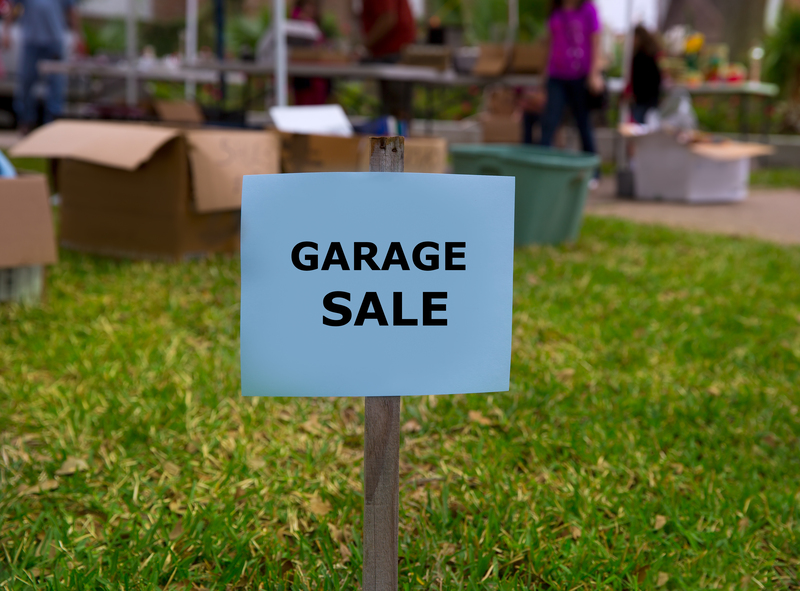How to Prepare Pots and Pans for Donation or Recycling
Are you looking to clear out old cookware? Perhaps you've upgraded your kitchen collection and now have a pile of unused pots and pans taking up space in your cabinets. Donating or recycling your unwanted cookware is an excellent way to reduce waste and help others in need. However, it's crucial to prepare pots and pans properly before donation or recycling to ensure they are accepted and handled safely. In this comprehensive guide, we'll explore the best practices for getting your cookware ready, where to donate or recycle them, and tips to make the process eco-friendly and effective.

Why Is It Important to Prepare Your Pots and Pans?
Preparation matters because donation centers and recycling programs have specific requirements. Cleaning and sorting ensure your cookware is safe for reuse or recycling. Proper preparation also increases the chances of your old pots and pans being accepted by your chosen organization--helping someone else while keeping items out of landfills.
Benefits of Donating or Recycling Cookware
- Reduces environmental impact: Recycling conserves resources and keeps metal and chemicals out of landfills.
- Supports local charities: Donated cookware can provide affordable options for low-income families or those setting up new households.
- Declutters your home: Freeing up space in your kitchen leads to a cleaner, more organized living environment.
- Encourages sustainable habits: Responsible disposal sets a positive example for your household and community.
Types of Pots and Pans Suitable for Donation or Recycling
Before you start, it's essential to know what types of cookware can be donated or recycled. Not all materials are accepted by every facility, so understanding the guidelines can help you sort your old pots and pans efficiently.
Cookware Typically Accepted
- Stainless Steel: Highly durable and commonly recycled.
- Aluminum: Lightweight, often accepted by scrap yards or recycling centers.
- Copper: Valued for its metal content and often donated in good condition.
- Cast Iron: Hefty, long-lasting, and recyclable or donatable if rust-free and safe.
- Enamel-coated items: Some centers will accept these, but check for chips or cracks first.
- Non-stick (Teflon, ceramic): Can be donated if in good condition; some recycling centers accept them without non-stick coating.
Cookware Often Not Accepted
- Heavily damaged or rusted pans
- Pots with broken handles or missing lids
- Pans with severely scratched or peeling non-stick surfaces
- Glass cookware (only take to specific recycling centers)
- Pots contaminated with food residue or household chemicals
Step-by-Step Guide: How to Prepare Pots and Pans for Donation
Preparing to donate your cookware involves cleaning, inspecting, and packaging to make sure it reaches others in usable condition:
1. Clean Thoroughly
- Wash all items with hot, soapy water. Remove grease, food residue, and stuck-on debris.
- Scrub off stains and rust using baking soda or a gentle abrasive cleaner for tough spots.
- Dry completely before packing. This prevents mold or corrosion during storage and transit.
2. Inspect for Usability
- Check handles, knobs, and lids to ensure they are secure and functioning.
- Look for chips, cracks, or severe scratches, especially on non-stick coatings.
- Test fit all corresponding lids and pots together for a complete set.
3. Remove Personalization and Labels
- Peel off any personalized labels, stickers, or names written on the item.
- If possible, remove or cover up barcodes or store-specific price tags, especially if donating.
4. Group Like Items Together
- Keep complete sets intact (e.g., saucepan with its lid).
- Bundle similar sizes together using string or recyclable materials.
5. Package Securely for Donation Drop-off
- Place items in sturdy boxes or reusable bags that can handle the weight.
- Use crumpled newspaper or recycled paper to cushion and prevent damage in transit.
- Label the box if you're dropping off at a location that sorts items by category.
Step-by-Step Guide: How to Prepare Pots and Pans for Recycling
If your cookware is not suitable for donation, recycling is the next best option. Here's how to prepare your pots and pans for the recycling process:
1. Check Local Recycling Guidelines
- Visit your city or county's recycling program website for accepted materials and instructions related to pots and pans recycling.
- Some curbside recycling programs do not accept cookware; you may need to take items directly to a scrap metal facility or household recycling center.
2. Separate Materials (If Possible)
- Remove any plastic handles or knobs if detachable. This step helps simplify the recycling process and may be required by your local recycler.
- Separate glass lids from metal pans. Recycle glass according to local guidelines, or donate if in good shape.
- Some centers require you to separate aluminum pans from stainless steel or other metals. Use a magnet - if it sticks, it's likely steel; if not, it may be aluminum.
3. Clean Off Food Residue
- Rinse thoroughly to remove any stuck-on food or grease, as dirty cookware can contaminate recycling loads.
4. Remove Non-Stick Coatings (If Required)
- Some scrap metal centers request that you remove non-stick coatings before recycling, as they interfere with the metal melting process.
- If removal isn't feasible, check if the facility accepts coated pans or only takes bare metal.
5. Transport to Recycling Center
- Bundle items securely - heavy metals can damage car interiors, so use old towels or cardboard to prevent scratches.
- Ask staff where to place your items when you arrive at the recycling facility.
- Keep a record of the materials and quantity for household sustainability tracking or recycling rebates where applicable.
Where to Donate Old Pots and Pans
Many organizations gladly accept gently used cookware donations. Before you head out, call to confirm they will accept your pots and pans and inquire about specific requirements. Here are some common options:
- Thrift stores: Goodwill, Salvation Army, and local non-profits.
- Homeless shelters and domestic violence centers: These facilities often need kitchen essentials for residents setting up new homes.
- Community outreach programs: Churches, synagogues, and community centers sometimes host drives for essentials.
- Online buy-nothing groups: Apps and platforms like Facebook Marketplace's free section, BuyNothing Project, or Freecycle.
- College student housing organizations: Students setting up apartments or dorms may appreciate affordable cookware.
If your cookware is in good shape - no severe scratches, wobbly handles, or warped bottoms - consider donating to these causes and making a difference.
Where to Recycle Old Pots and Pans
- Metal recycling centers or scrap yards: Many accept aluminum, stainless steel, and copper pots and pans for recycling, regardless of non-stick coating if the center allows it.
- Curbside recycling programs: Some allow small metal items; check your program's guidelines.
- Household hazardous waste facilities: If your pans have non-stick coatings or other chemicals, take them to an appropriate facility for safe processing.
- Specialty cookware stores: Some stores host recycling drives or take back used items when you buy new ones.
Tips for Environmentally Friendly Donation and Recycling
- Donate first, recycle second: If your pots and pans can be reused, donation is always more sustainable than recycling.
- Look for local solutions: Choosing a neighborhood charity or recycling center cuts down on transportation emissions.
- Get creative: Repurpose old cookware as planters, organizers, or art projects if they're not suitable for donation or recycling.
- Share your story: Post on social media or neighborhood networks to find someone who could use your old pots and pans before discarding them.
- Educate others: Talk to friends and family about proper cookware disposal options to spread sustainable practices.

Frequently Asked Questions about Pots and Pans Donation and Recycling
Can I donate non-stick pans?
Yes, as long as the non-stick surface isn't scratched, flaking, or showing signs of peeling. Many centers will only accept cookware that is completely safe and still usable.
What if my pans are heavily used or damaged?
If your pots or pans have severe rust, deep scratches, or broken parts, they're better suited for recycling. Damaged cookware is generally not accepted for donation due to safety concerns.
Is it necessary to remove the plastic handle for recycling?
If you're able, remove plastic handles, knobs, and lids. This makes the recycling process easier and may be required by your local recycling center.
Can I put old cookware in the trash?
While you can legally throw out small amounts of cookware in most areas, it's far better for the environment to donate or recycle them instead. Metal and non-stick coatings can take hundreds of years to break down in landfills.
Conclusion: Give Your Old Cookware a New Purpose!
Properly preparing your pots and pans for donation or recycling is a simple yet powerful way to help others and protect our environment. By following the steps above, you'll ensure your cookware is ready for a new life -- whether in someone else's kitchen or as recycled material for new products. Give back, reduce waste, and enjoy a more organized home by responsibly handling your old pots and pans today!
If you're unsure about the best place to donate or recycle in your area, reach out to your local recycling center or charity. They can provide guidance and direct you to the right resources. Together, we can make a difference, one pot and pan at a time!